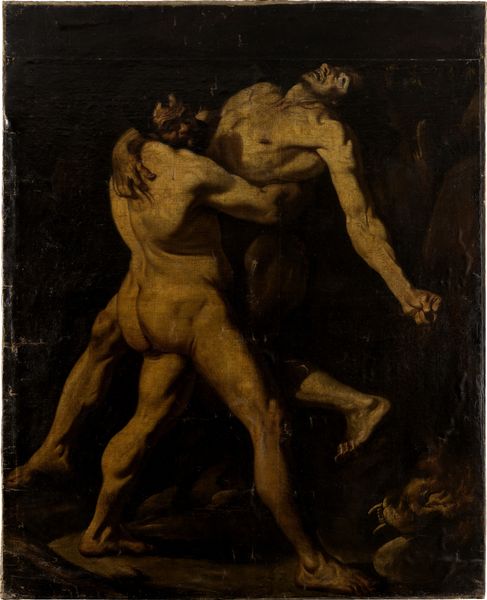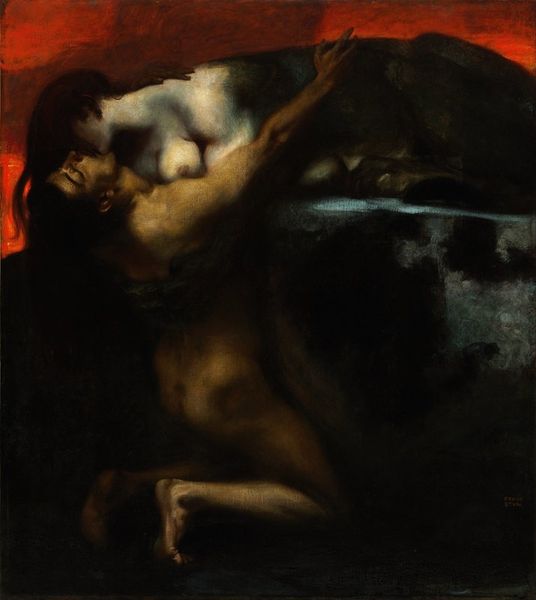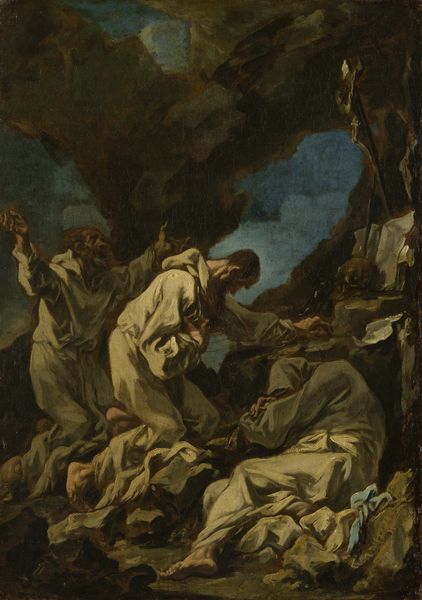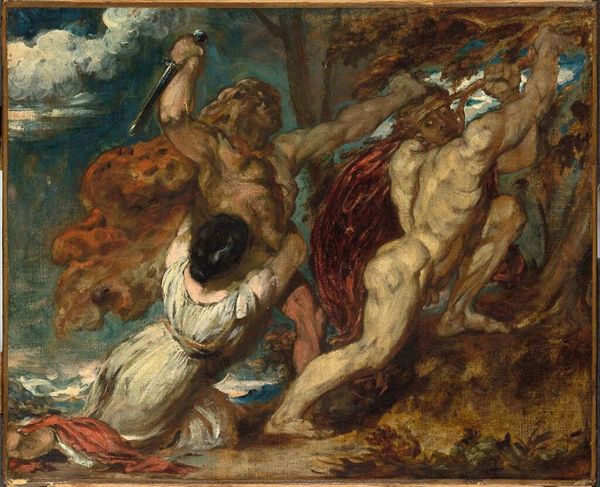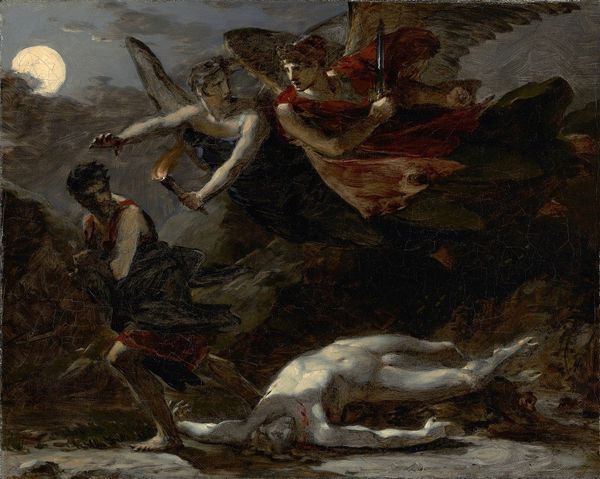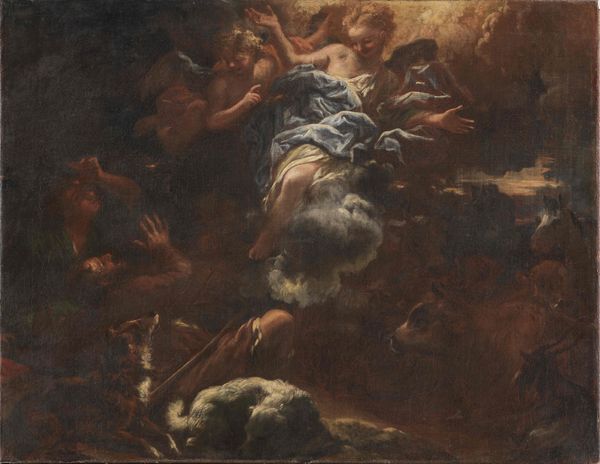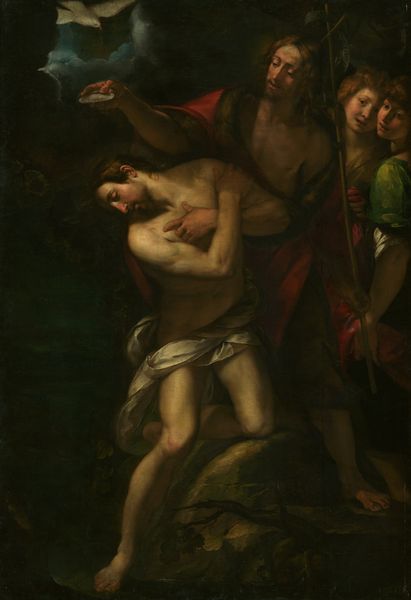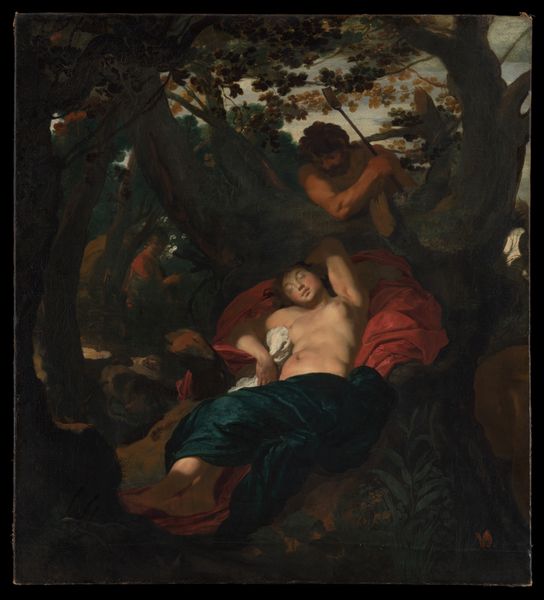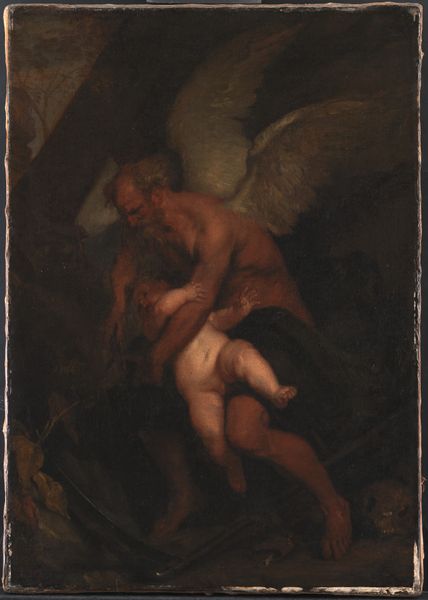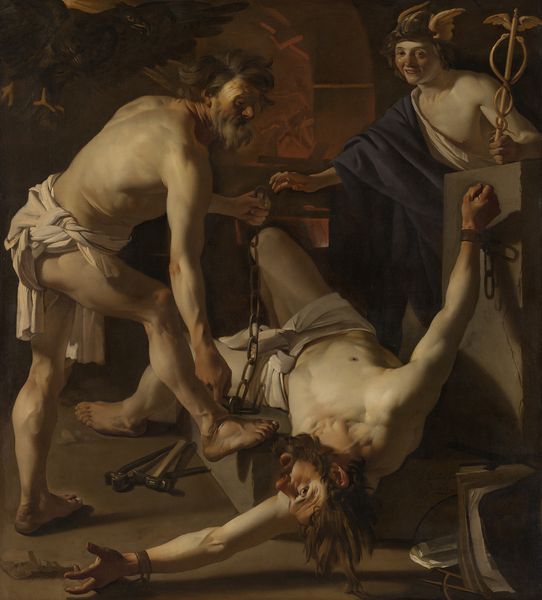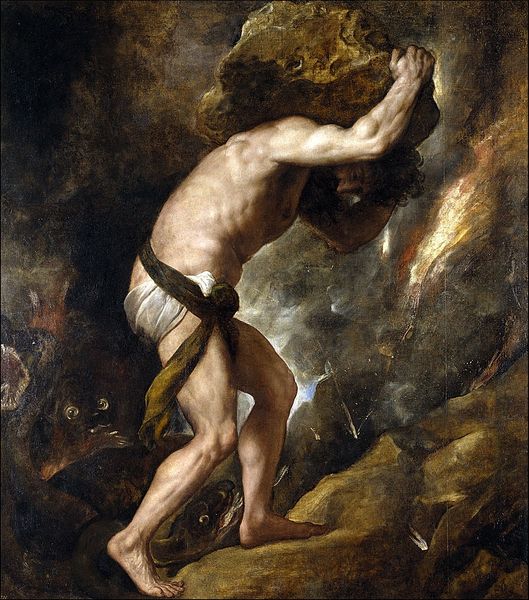
painting, oil-paint, oil, canvas
#
narrative-art
#
baroque
#
painting
#
oil-paint
#
oil
#
figuration
#
canvas
#
14_17th-century
#
history-painting
Dimensions: 204.7 x 170.3 cm
Copyright: Public Domain
Editor: This painting is called "Cain Fleeing after the Murder of Abel" by Giovanni Battista Langetti, from the 17th century, and it's an oil on canvas. The scene feels incredibly turbulent and dark, the figures are rendered with a kind of raw intensity. What strikes you most about its visual composition? Curator: Immediately, the stark contrast between light and shadow, a hallmark of Baroque painting, compels the eye. Note how Langetti uses tenebrism not merely to illuminate the figures of Cain and Abel but to delineate the emotional weight of the narrative. The fleeing Cain is dynamically positioned, his body a series of diagonals that clash with the static horizontal of Abel's corpse. How might we understand this contrast as a visual encoding of guilt and innocence? Editor: So, it's less about the story itself and more about how the artist uses light and form to communicate that story’s emotional core? Curator: Precisely. Observe also the brushwork. It’s loose, almost violent, especially in the rendering of the landscape. This textured surface is not simply representational; it’s expressive. Langetti manipulates the materiality of the oil paint to evoke the turmoil within Cain and the devastation of the act he has committed. Consider how this emphasis on texture impacts the overall meaning. Editor: I see what you mean, it is interesting that Langetti focused on texture and dynamic composition to emphasize drama. I assumed history paintings were illustrative, focused on accuracy above all else. Curator: Not exclusively. Here, the figures themselves almost become secondary to the dramatic interplay of light, shadow, and texture. It prompts a semiotic reading—a system of signs—where artistic devices communicate affect. Editor: This was very enlightening! I now realize that visual analysis can allow us to "decode" the raw emotion within a painting through understanding light, composition, and texture. Curator: Indeed. It reveals the intrinsic qualities that elevates a piece to something that affects the soul.
Comments
No comments
Be the first to comment and join the conversation on the ultimate creative platform.
